The Structural E/I Balance Constrains the Early Development of Cortical Network Activity
- PMID: 34349623
- PMCID: PMC8326976
- DOI: 10.3389/fncel.2021.687306
The Structural E/I Balance Constrains the Early Development of Cortical Network Activity
Abstract
Neocortical networks have a characteristic constant ratio in the number of glutamatergic projection neurons (PN) and GABAergic interneurons (IN), and deviations in this ratio are often associated with developmental neuropathologies. Cultured networks with defined cellular content allowed us to ask if initial PN/IN ratios change the developmental population dynamics, and how different ratios impact the physiological excitatory/inhibitory (E/I) balance and the network activity development. During the first week in vitro, the IN content modulated PN numbers, increasing their proliferation in networks with higher IN proportions. The proportion of INs in each network set remained similar to the initial plating ratio during the 4 weeks cultivation period. Results from additional networks generated with more diverse cellular composition, including early-born GABA neurons, suggest that a GABA-dependent mechanism may decrease the survival of additional INs. A large variation of the PN/IN ratio did not change the balance between isolated spontaneous glutamatergic and GABAergic postsynaptic currents charge transfer (E/I balance) measured in PNs or INs. In contrast, the E/I balance of multisynaptic bursts reflected differences in IN content. Additionally, the spontaneous activity recorded by calcium imaging showed that higher IN ratios were associated with increased frequency of network bursts combined with a decrease of participating neurons per event. In the 4th week in vitro, bursting activity was stereotypically synchronized in networks with very few INs but was more desynchronized in networks with higher IN proportions. These results suggest that the E/I balance of isolated postsynaptic currents in single cells may be regulated independently of PN/IN proportions, but the network bursts E/I balance and the maturation of spontaneous network activity critically depends upon the structural PN/IN ratio.
Keywords: cell culture; cerebral cortex; cortical network; development; gamma-aminobutyric acid; interneurons; projection neurons.
Copyright © 2021 Xing, de Lima and Voigt.
Conflict of interest statement
The authors declare that the research was conducted in the absence of any commercial or financial relationships that could be construed as a potential conflict of interest.
Figures
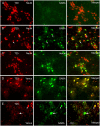


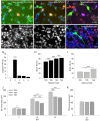


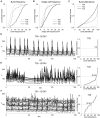
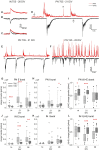
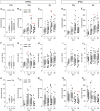

Similar articles
-
Developmental downregulation of GABAergic drive parallels formation of functional synapses in cultured mouse neocortical networks.Dev Neurobiol. 2008 Jun;68(7):934-49. doi: 10.1002/dneu.20632. Dev Neurobiol. 2008. PMID: 18361402
-
Contribution of GABAergic interneurons to the development of spontaneous activity patterns in cultured neocortical networks.Front Cell Neurosci. 2010 Jun 21;4:15. doi: 10.3389/fncel.2010.00015. eCollection 2010. Front Cell Neurosci. 2010. PMID: 20617185 Free PMC article.
-
An Optogenetic Approach for Investigation of Excitatory and Inhibitory Network GABA Actions in Mice Expressing Channelrhodopsin-2 in GABAergic Neurons.J Neurosci. 2016 Jun 1;36(22):5961-73. doi: 10.1523/JNEUROSCI.3482-15.2016. J Neurosci. 2016. PMID: 27251618 Free PMC article.
-
Compensatory physiological responses to chronic blockade of amino acid receptors during early development in spontaneously active organotypic cerebral cortex explants cultured in vitro.Prog Brain Res. 2005;147:231-48. doi: 10.1016/S0079-6123(04)47018-6. Prog Brain Res. 2005. PMID: 15581710 Review.
-
Basic developmental rules and their implications for epilepsy in the immature brain.Epileptic Disord. 2006 Jun;8(2):91-102. Epileptic Disord. 2006. PMID: 16793570 Review.
Cited by
-
Compensatory Regulation of Excitation/Inhibition Balance in the Ventral Hippocampus: Insights from Fragile X Syndrome.Biology (Basel). 2025 Mar 31;14(4):363. doi: 10.3390/biology14040363. Biology (Basel). 2025. PMID: 40282228 Free PMC article. Review.
-
Comparative study of the effects of prenatal sevoflurane exposure at different cortical stages on forebrain development and maturation in offspring.Front Neurosci. 2025 Apr 3;19:1556703. doi: 10.3389/fnins.2025.1556703. eCollection 2025. Front Neurosci. 2025. PMID: 40248263 Free PMC article.
-
A Freely Moving Photothrombotic Stroke Model Reveals Sustained Dysfunction of GABAergic Neuron in Contralesional Cortex Using Miniaturized Two-Photon Microscopy.Transl Stroke Res. 2025 Mar 10. doi: 10.1007/s12975-025-01336-2. Online ahead of print. Transl Stroke Res. 2025. PMID: 40063293
-
Gabaergic Interneurons in Early Brain Development: Conducting and Orchestrated by Cortical Network Activity.Front Mol Neurosci. 2022 Jan 3;14:807969. doi: 10.3389/fnmol.2021.807969. eCollection 2021. Front Mol Neurosci. 2022. PMID: 35046773 Free PMC article.
References
-
- Anderson S. A., Baraban S. C. (2012). “Cell therapy using GABAergic neural progenitors,” in Jasper’s Basic Mechanisms of the Epilepsies, eds Noebels J. L., Avoli M., Rogawski M. A., Olsen R. W., Delgado-Escueta A. V., 4th Edn., (Bethesda, MD: National Center for Biotechnology Information (US)), 1–7. - PubMed
LinkOut - more resources
Full Text Sources

